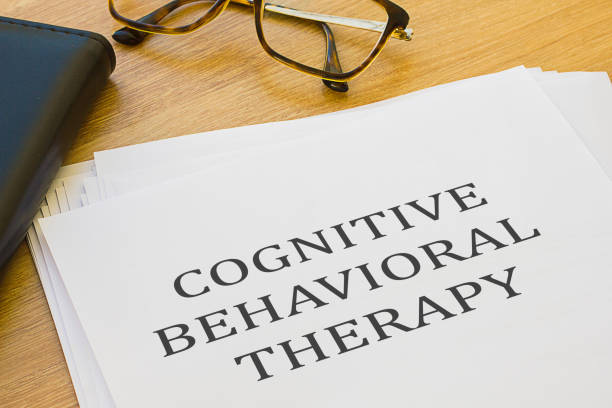CBT (Cognitive behavioral therapy) is a widespread type of talk therapy known as psychotherapy. You work with a mental health consultant, a psychotherapist, or a therapist in a structured means, attending a limited session. CBT helps you be aware of negative or inaccurate thinking so you can view difficult situations more clearly and react to them more usefully. CBT can be a beneficial tool, alone or in collection with other therapies in dealing with mental health disorders, like PTSD (post-traumatic stress disorder), depression, or an eating disorder. Cognitive behavioral therapy can be a beneficial tool to help anyone understand how to manage stressful life circumstances better.
How Does Cognitive Behavioral Therapy Work?
Cognitive behavioral therapy treats a broad range of problems. It is frequently the preferred kind of psychotherapy because it can help you specify and cope with particular challenges. It commonly requires fewer sessions than other kinds of therapy and is accomplished in a structured way. CBT is a helpful tool for dealing with emotional challenges. For instance, it may help you:
- Prevent a relapse of mental disease symptoms
- Manage chronic physical symptoms
- Deal with a mental illness when medications are not a good option
- Manage symptoms of mental disease
- Learn better ways to communicate
- Learn methods for coping with stressful life circumstances
- Cope with a medical disease
- Specify ways to manage emotions
- Resolve relationship conflicts
- Survive emotional trauma related to violence or abuse
- Cope with grief or loss
Mental health disorders that may improve with cognitive behavioral therapy for depression are anxiety disorders, depression, PTSD, Phobias, eating disorders, OCD, sleep disorders, SUD, and schizophrenia. In some cases, cognitive behavioral therapy is most effective when incorporated with other treatments, like antidepressants.

What To Expect From CBT?
CBT (Cognitive behavioral therapy) may be accomplished one-on-one or in groups with family or people with identical issues. In addition, online resources are accessible that may make contributions to CBT possible, mainly if you live in a region with few local mental health aids.
CBT frequently includes:
- Understanding your mental health situation.
- Understanding and practicing coping, relaxation, assertiveness, resilience, and stress management.
At the first session, the therapist will gather data about you and ask what concerns you would like to work on. The therapist will ask the person about the current and past emotional and physical health to develop a deeper understanding of the situation. The therapist may communicate whether the person might benefit from other mental health treatment like medications. The first session is also a chance for the person to consult with the therapist to see if they will be a good match for the patient.
It might take some sessions for the therapist to understand the person’s situation and concerns thoroughly and to infer the best course of action. If the person feels uncomfortable with the first therapist, try someone else.
What Happens During Cognitive Behavioral Therapy?
Your therapist will motivate you to talk about the feelings and thoughts and what is troubling the person. Do not worry if you find opening up about the feelings challenging. The therapist can enable the person to gain more comfort and confidence. CBT commonly focuses on particular problems, using a goal-oriented strategy. As a person goes through the therapy procedure, the therapist may ask them to do homework activities, practices, or reading that build on what the person learns during their regular therapy sessions and encourage them to apply what they learn in their everyday life.
The therapist’s method will depend on your specific situation and preferences. For example, the therapist may incorporate cognitive behavioral therapy for anxiety with another therapeutic strategy, for instance, interpersonal therapy, which concentrates on relationships with other people.
What Are The Steps Involved In Cognitive Behavioral Therapy?
Identify Problematic Situations
These may comprise such problems as a medical condition, grief, divorce, anger, or symptoms of a mental health disease. The person with his therapist may spend some time concluding what difficulties and goals they want to focus on.
Become Conscious Of Emotions And Feelings About These Problems
Once the person has identified the difficulties to work on, the therapist will enable the person to share their thoughts about them. This may comprise observing what they tell about an experience, interpreting the significance of a situation, and the notions of other people and incidents. The best cognitive behavioral therapist near you may indicate that you keep a journal of a person’s thoughts.
Identify Negative Thinking
To help the person recognize patterns of thinking and behavior contributing to the problem, the therapist may ask them to pay attention to their emotional, physical, and behavioral responses in various situations.
Reshape Negative Thinking
The therapist will likely motivate the person to ask whether their view of a circumstance is based on fact or on a false perception of what is happening. This step can be challenging. However, the person may have long-standing means of thinking about life. With practice, helpful thinking and behavior will become a habit and will not take as much effort.
Length Of Therapy
Cognitive Behavioral Therapy near you is commonly considered short-term therapy ranging from about five to twenty sessions. The therapist and the person can communicate how many sessions may be adequate for the person. Components to consider include:
- Type of disease or situation
- The severity of the symptoms
- How long the person had symptoms or have been dealing with the situation
- How rapidly the person makes improvement
- How much stress is the person experiencing
- How much assistance the person receives from family and other people
Results Of Cognitive Behavioral Therapy
CBT (Cognitive Behavioral Therapy) may not remedy the person’s condition or make an unpleasant problem disappear. But it can provide the person the power to cope with the circumstance healthily and feel better about themselves and their life.